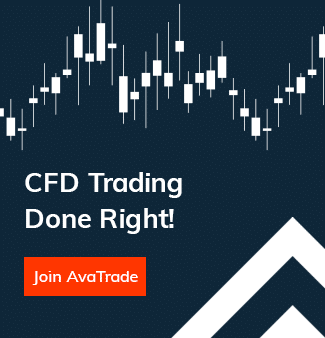
- What Are Options?
- Key Vanilla Options Terminology
- The Effects of Market Volatility
- The Basics of Vanilla Options Trading
- Examples of Trades
- Why Trade Options?
What Are Options?
Vanilla options are contracts giving traders the right to buy or sell a specified amount of an instrument at a certain price at a pre-defined time. When trading vanilla options, the trader has the power to control, not only the instrument and the amount he trades, but also when and at what price. Options can be traded for a day, a week, a few months or even a year.
Trading options is a mystery for many people. Many would choose trading spot over options, but once they begin learning about options – traders get excited. The variety of choices, with the ability to control all aspects of a trade, properly balancing risks and rewards, opens traders to an exciting world where all options are open.
Start trading real options with a regulated broker!
Key Vanilla Options Terminology
There are some unique terms in the vanilla options trading world, and one must know them before starting to trade. There are two types of options:
- Call options, which give the buyer the right to buy an instrument at a specified price. Call options are more typically bought by traders who believe the market is on the rise, known as bull traders.
- Put options, which give the buyer the right to sell the instrument at a specified price. On the other hand, put options are bought by traders speculating the market will go down, or bear traders.
However, one can either buy or sell either type of option.
In order to own an option, the buyer pays the seller an amount called the premium. When the trader acts as the buyer he pays the premium, and when selling an option he receives it. The premium is decided by a few factors: the current rate or price of the instrument is the first one.
In addition, since options are contracts to trade in the future, there is a time element. The date on which the option can be exercised is called the expiration date, and the price at which the option buyer can choose to execute is the strike price. Longer-dated options have higher premiums than shorter-dated options, much like buying insurance.
Market Volatility
Another key factor in determining the premium is the volatility of the underlying instrument. High volatility increases the price of the option, as higher volatility means there is a greater likelihood of a larger market move that can bring about profits – potentially even before the option has reached its strike price. A trader can choose to close his option position on any trading day, profiting from a higher premium, whether it has risen due to increased volatility or the market moving his way.
The following table demonstrates the impact on the prices of call and put options if any of the key factors moves higher:
| AN INCREASE IN: | CALL OPTIONS | PUT OPTIONS |
| Spot | + | – |
| Strike Price | – | + |
| Expiration Date | + | + |
| Volatility | + | + |
The Basics of Vanilla Options Trading
When buying an option – whether a put or a call – the trader pays the upfront premium from his account’s cash balance, and his potential earnings are limitless. When selling options, however, a trader receives the premium upfront into his cash balance, but is exposed to potentially unlimited losses if the market moves against the position, much like the losing side of a spot trade.
To limit this risk, traders can use stop-loss orders on options, just like with spot trades. Alternatively, a trader can buy an option further out of the money, thus significantly minimizing his potential exposure. When buying options there is limited risk; the most that can be lost is what was spent on the premium. When selling options – a great way to generate income – the trader acts like an insurance company, offering someone else protection on the position.
The premium is collected, and if the market reacts according to the speculation, the trader keeps the profits he made from taking that risk. If wrong, it is not much different than being wrong on a regular spot trade. In either case, the trader is exposed to unlimited downside, and therefore would close out the position (with stop-loss orders, for example); but with options, the trader will have earned the premium, a real advantage vs spot trading.
Steps in Vanilla Trading
- The first step in trading options is to determine the market view for the chosen instrument. If a trader believes a certain instrument will rise, he has three ways to express that view. The first would be to buy the instrument outright, i.e. with regular spot trading.
- The second is to buy a call option. With this strategy, the most he can lose is the premium paid up front. This position can be sold at any time. This is the safest way to express a bullish view.
- The third course of action is to sell a put option. If the instrument is higher than the strike price at expiration, the option will expire worthless, and the trader keeps the entire premium he collected upfront.
Example Trades
Scenario: The current price for EURUSD pair is 1.1000. The trader speculates it will rise within the week.
Spot trade: In the first case scenario he will open a spot position for 10,000 units on any platform at the given spreads. If the EURUSD price moves higher, he instantly makes a profit.
Buy Call Option: In the second strategy, he buys a call option with one week to expiration at a strike price, for example, of 1.1020. Once buying he pays the premium as shown in the trading platform, for example, 0.0050 or 50 pips. If, at the expiration date, EURUSD exceeds the strike price, he will earn the difference between the strike price and the prevailing EURUSD rate. His breakeven level will be the strike price plus the premium he paid up front. He can also profit at any time prior to expiration due to an increase in implied volatility or a move higher in the EURUSD rate. The higher it goes, the more he can make.
For example, if at expiration the pair is trading at 1.1100, his option will be 0.0080 or 80 pips “in the money”, and his profit will be 80 pips minus the premium he paid of 50 pips. On the other hand, if spot is below the strike at expiration, his loss will be the premium he paid, 50 pips, and no more.
Sell Put Option: In the third case, he will sell a put option, meaning, he will act as the seller and receive the premium directly to his account. The risk he takes by selling an option is if he is wrong about the market; and so, he must be careful in choosing the strike price. He should be comfortable in his view that EURUSD will not be below this level at expiration.
Another way to say it is that he must be comfortable buying EURUSD at the strike price because if spot finishes lower, the seller has the right to “put” EURUSD to him at the strike price. In return for taking this risk, the option seller receives the upfront premium. If spot finishes higher than the strike price, he keeps the premium and is free to sell another put, adding to his income earned from the first trade.
In both options trading examples, the premium is set by the market, as shown in the options trading platform at the time of the trade. The gains and losses, based on the strike price, will be determined by the rate of the underlying instrument at expiration.
Why Trade Options?
Risk management
At the end of the day, it is considered a safer investment, in fact, to buy an option, as these are far less risky than trading the underlying asset. For a seller, the downside risks are less than that of being wrong on a spot trade, as the option seller gets to set the strike price according to his risk appetite, and he earns a premium for having taken the risk. Options do require an initial investment of time to get to know the product.
Express any market view
Perhaps the most unique advantage of options is that one can express almost any market view, by combining long and short, call and put options, and long or short spot positions. The trader is bearish on USDJPY but not sure? He can buy a put option for his target expiration date, sit back and relax. Whether USDJPY goes up or down tomorrow, he is safe in his position all the way to the expiration date. If he turns out to be right and spot is lower than the strike price by at least the premium value, he will earn profits.
Multiple Strategies:
Like any instrument, trading options has its risks and potential losses. However, there is a major difference between trading spot and trading options. In spot trading the trader can only speculate on the market direction – will it go up or down. With options, on the other hand, he can execute a trading strategy based on many other factors – current price vs strike price, time, market trends, risk appetite, and more; i.e. he has much more control over his portfolio, and therefore more room for maneuvers.
Learning Center
Options are a great tool for any trader who invests just a little time to understand how they work. Friedberg Direct powered by AvaTrade technology offers a full education section accessed directly from the trading platform.
Increased trading choices
For an experienced and aggressive trader, options can be used in a myriad of ways. For the beginner or a more conservative trader, long option strategies, such as buying options and option spreads, offer a limited risk entry into the market. By using the products and tools offered on the Friedberg Direct AvaOptions platform wisely, this flexibility generates more possibilities for making profits.
Vanilla Options with Friedberg Direct
Friedberg Direct’s AvaOptions is not only a leading platform for trading options but also one that was built with the client in mind. The platform has embedded tools that are available to all clients, and their purpose is to guide and assist you every step of the way.
Moreover, the platform is simple to understand and use. This is done, amongst other ways, by allowing you to shape the display and tools based on your desire, and therefore to create the platform to help you succeed.
With Friedberg Direct powered by AvaTrade Technology you can trade real options with a regulated broker!
Vanilla Options FAQs
- What assets can I trade with vanilla options?
There are a huge variety of assets that have vanilla options associated with them. The best known are the stock vanilla options, but you will also find vanilla options available for commodities like gold and crude oil, currencies, bonds, and a host of other assets. This can make it far easier for traders to hedge strategies that might otherwise present too much risk. Please note, however, that Friedberg Direct only offers trading in vanilla options for currencies, gold and silver.
- Are vanilla options a good choice for beginners?
Vanilla options are one of the more straightforward types of financial derivatives, so they can be used by novice traders without too much additional risk. They might not be suitable for someone who has never traded before in their lives, however for those who do fully understand the risks involved with vanilla options there’s no reason not to use them as one part of a trading strategy.
- What does it mean when an option is “in the money”?
In the money options are those that have an intrinsic value. In other words, the option has a value because the strike price is favourable compared with the actual market price of the asset. An in the money call option means the holder has the opportunity to buy the asset below its current market price. An in the money put option means the trader has the opportunity to sell the asset at a price above the current market price. An in the money option doesn’t automatically mean the trader has a profit either. You must also factor in any trading costs and fees.
These FAQs, comments/analysis do not take into consideration your individual personal circumstances and trading objectives. Therefore, they should not be considered as a personal recommendation or investment advice. They are intended for educational purposes only. Past performance is not indicative of future results. There is no guarantee that the contents or instructions will result in profits or not result in losses.







